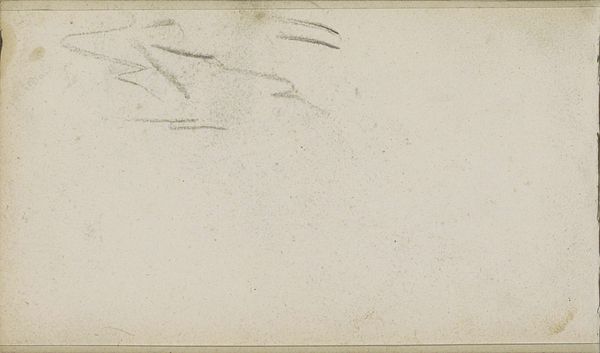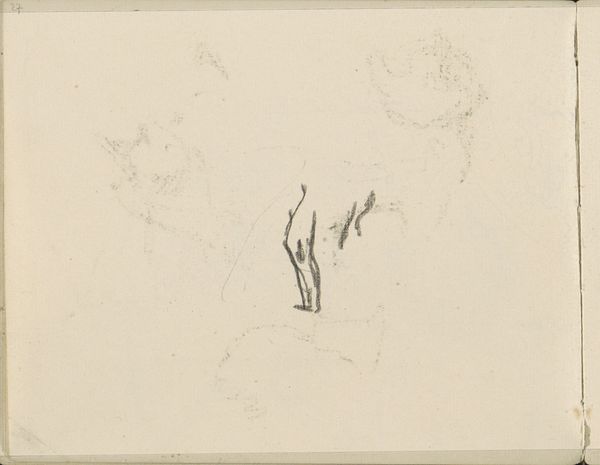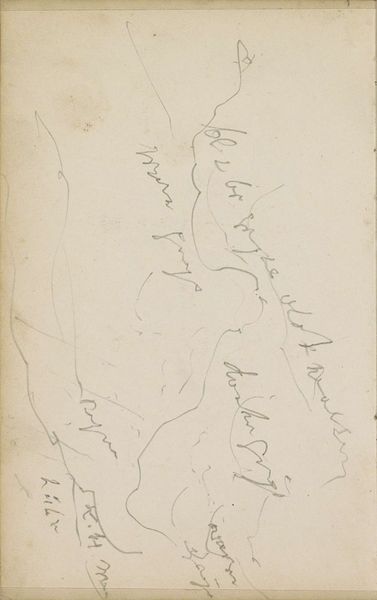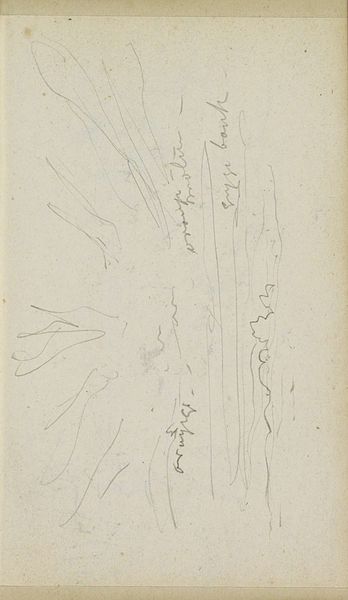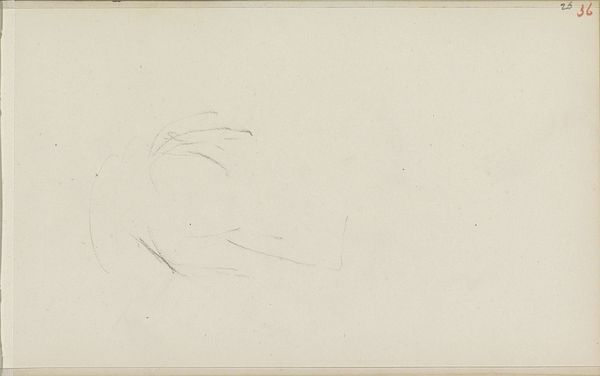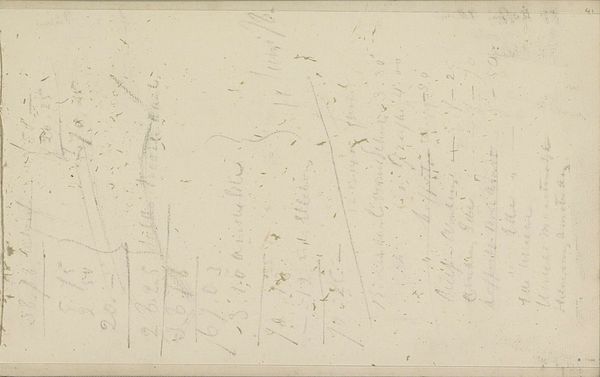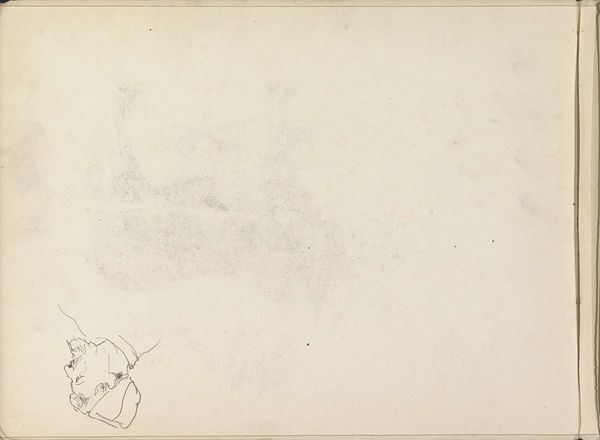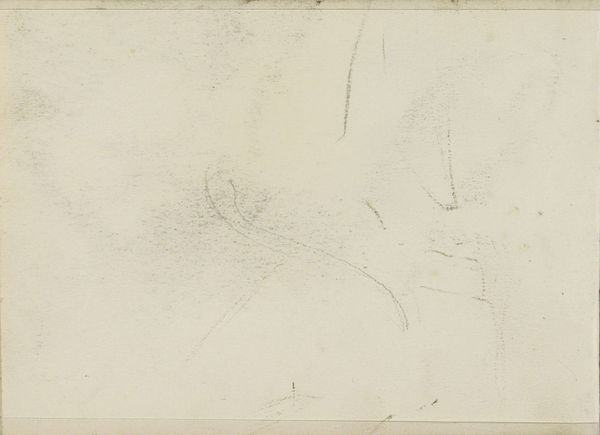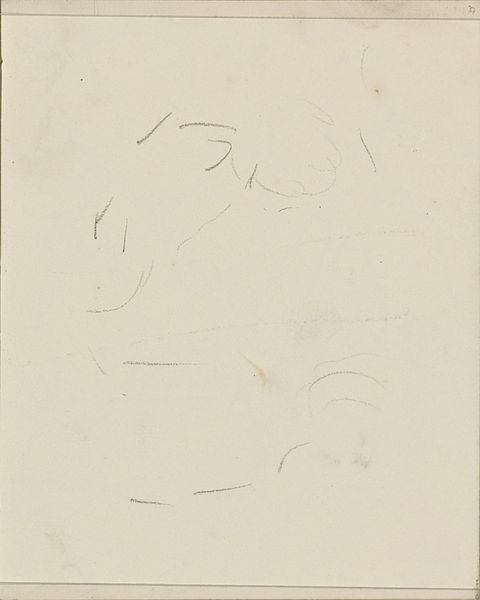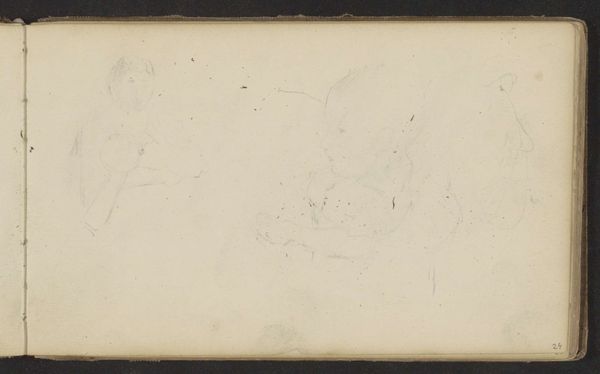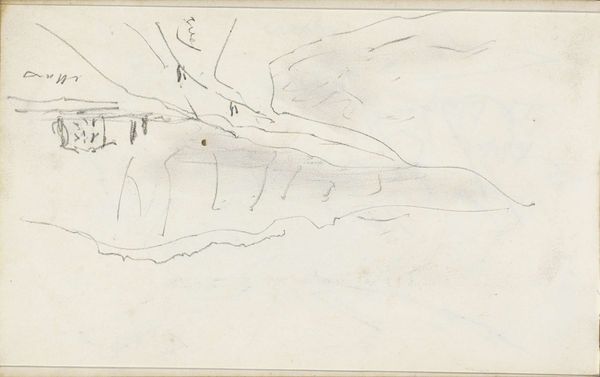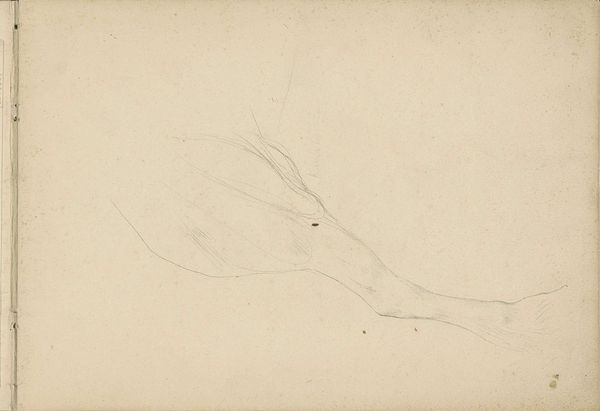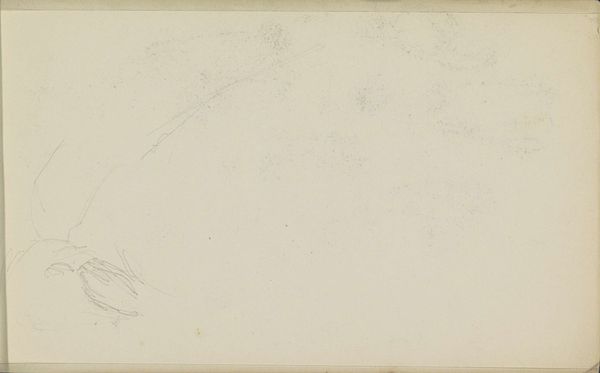
Copyright: Rijks Museum: Open Domain
Curator: Well, hello there! What do you make of this intriguing little piece? It’s titled “Annotaties” and was rendered in pencil on paper by George Hendrik Breitner between 1886 and 1903. Editor: My first impression is… elusive. Like trying to grasp a memory that's just out of reach. The pale pencil strokes against the creamy paper give it this sense of ephemerality. Curator: Ephemeral, yes, but charged! Breitner was a master of capturing fleeting moments. Look closer – it’s a landscape, almost ghostly. Think about what landscape means at the end of the 19th Century: industrialization, urbanization. Not such pretty pictures when you were living it, eh? Editor: Absolutely. And I wonder about the "annotations," the title. What were the artist marking or noting? Is it about ownership and marking land—connecting back to dispossession and enclosure in Dutch colonial history? Or, at the very least, registering a changing cityscape. Curator: That’s certainly one lens through which to see it. For me, these scribbles offer a fascinating glimpse into the artist’s thought process—pure improvisation! Imagine Breitner standing there, quickly jotting down his impressions before the light changed or the mood shifted. He never truly considered finishing these drawings, they were a means to an end. Editor: It also seems almost confrontational. To me it's very similar to the work of his contemporary, Vincent Van Gogh; someone else trying to mark what seemed both there and simultaneously intangible. Curator: But Vincent! A tortured soul; a genius perhaps, but clearly destined for greatness, not only marking space, but also using nature and color for his self expression. By contrast, Breitner used his impressions and annotations more like a raw document than something artistic; it was always for practical applications in painting, and never art in its own right! Editor: So, in a way, he’s almost working against the canon. His lack of "finish" almost questions the value we place on traditionally "beautiful" or "complete" artwork? Curator: Exactly! By showcasing something so raw and personal, Breitner challenges our preconceptions of what art *should* be. He reveals the beauty and meaning inherent in the ordinary. I’m leaving here today knowing a bit more about him. Editor: And hopefully seeing with new eyes and a deeper sense of history!
Comments
No comments
Be the first to comment and join the conversation on the ultimate creative platform.
